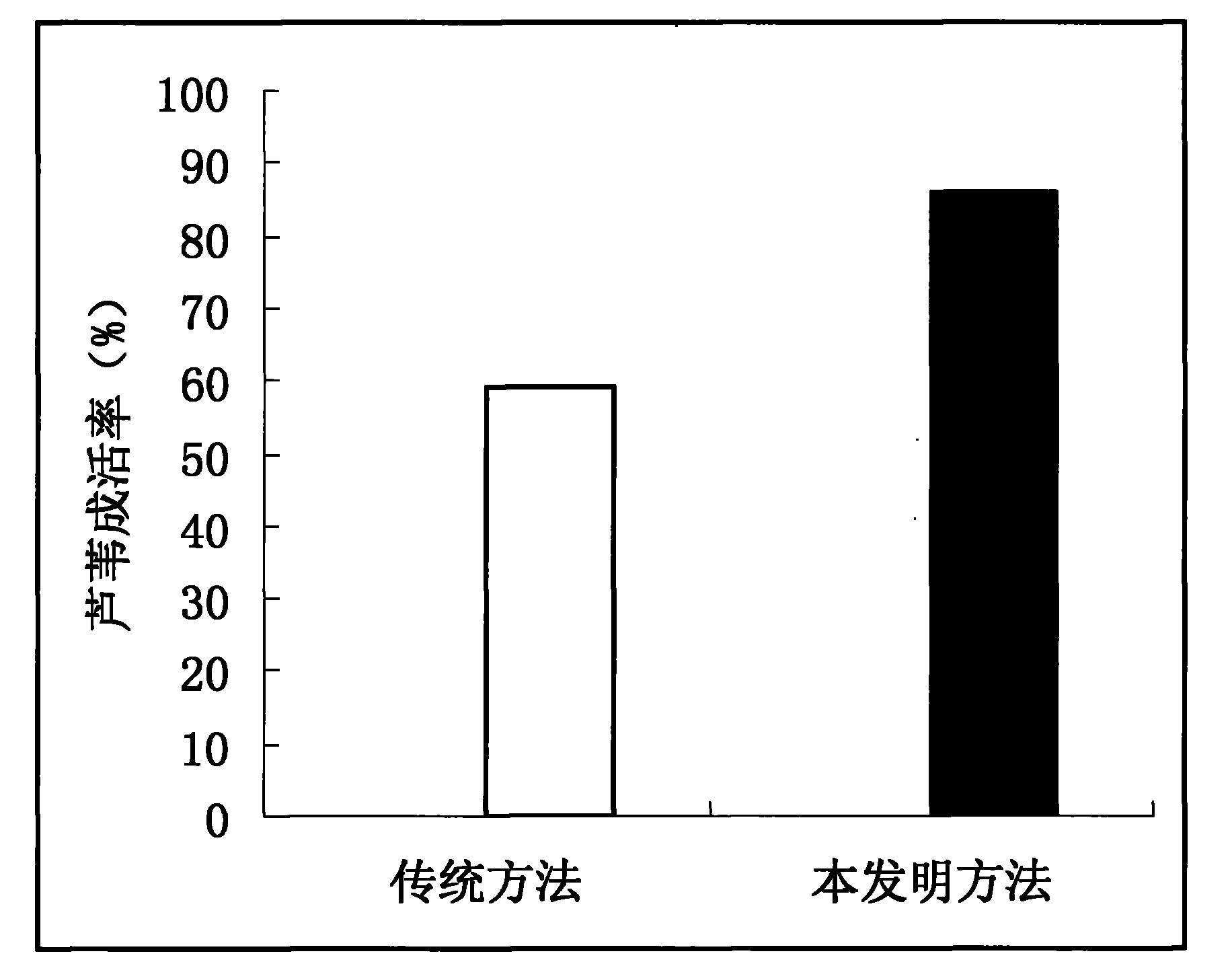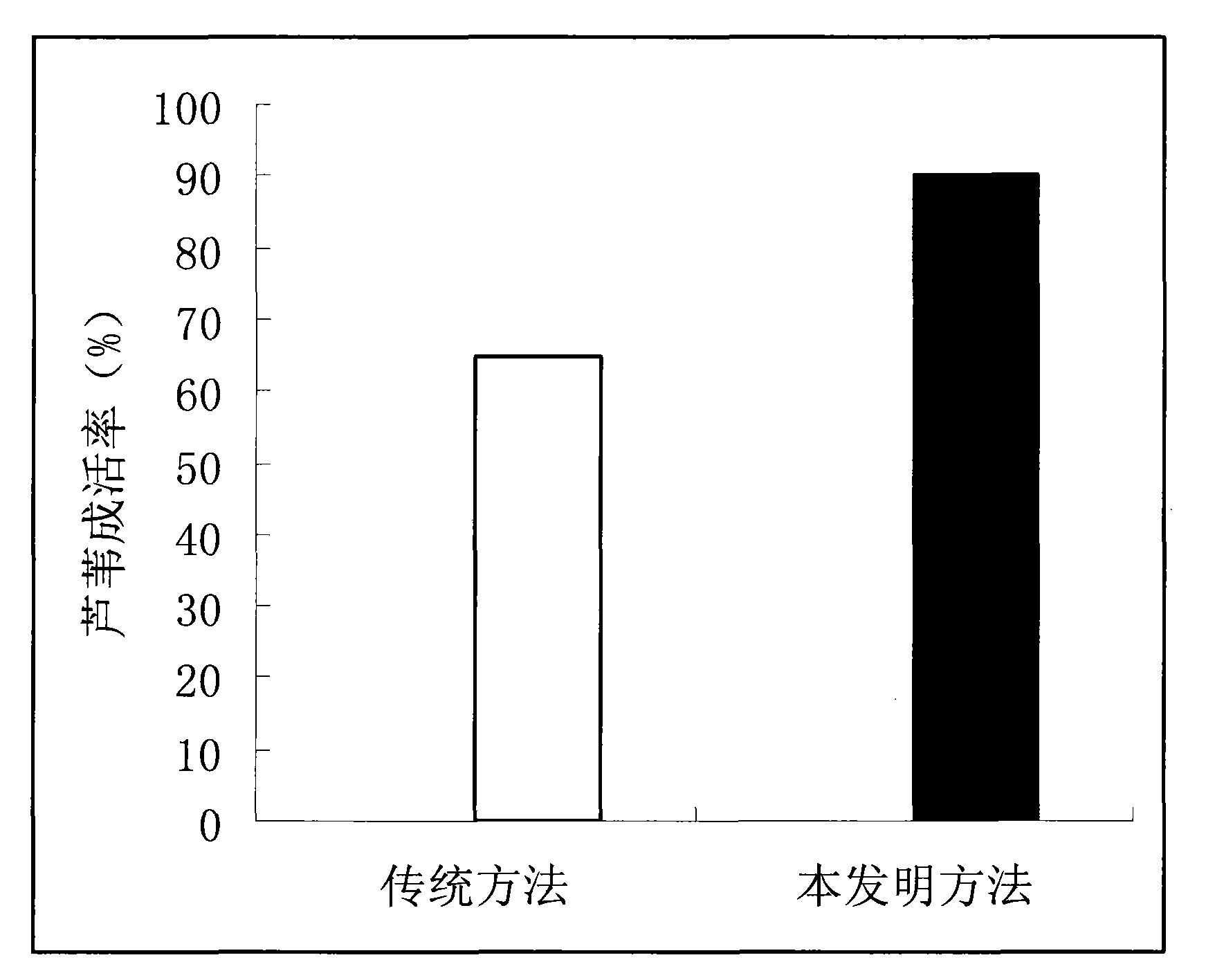Method for rebuilding reed wetlands in shallow water
A reed and wetland technology, which is applied to establish reed wetland fields in shallow water areas, can solve the problems of wetland construction difficulties, waste of manpower and resources, and achieve the effect of improving the survival rate of transplanting
- Summary
- Abstract
- Description
- Claims
- Application Information
AI Technical Summary
Problems solved by technology
Method used
Image
Examples
Embodiment 1
[0030] Example 1 Reconstruction test of a lakeside wetland
[0031] During the construction test of a lakeside wetland, it was divided into two groups for the test. The method used in this example group mainly selected wetland plants as reeds, and appropriately added plants such as cattails, water onions, calamus, and cannas.
[0032] When cultivating reed seedlings for wetland cultivation, according to normal cultivation methods, cultivate reed seedlings to 60-90 cm on land (indoor or outdoor); Transplant the reed seedlings with soil to the lakeside or non-flooded lakeside wetland soil with shallow water. Next to the plants, use 3 bamboo sticks to form a support, and fix the stems of the plants on the top of the support. The height of the support is slightly higher than the height of the plant. After the plants are mature, remove the support; or after the wetland is flooded, the support will be slowly washed away by water.
[0033] The other group used the traditional metho...
Embodiment 2
[0035] Example 2 Construction of a lakeside wetland
[0036] During the construction test of a lakeside wetland, it was divided into two groups for the test. The method adopted in this example group mainly used reeds as wetland plants, and cattail, calamus, canna and other plants were added appropriately.
[0037] When cultivating reed seedlings for wetland cultivation, according to normal cultivation methods, cultivate reed seedlings to 60-90 cm on land (indoor or outdoor); Transplant the reed seedlings with soil to the lakeside or non-flooded lakeside wetland soil with shallow water. Next to the plants, use 3 bamboo sticks to form a support, and fix the stems of the plants on the top of the support. The height of the support is slightly higher than the height of the plant. After the plants are mature, remove the support; or after the wetland is flooded, the support will be slowly washed away by water.
[0038] The other group used the traditional method to transplant the c...
Embodiment 3
[0040] Example 3 Construction of a lakeside wetland
[0041] During the construction test of a lakeside wetland, it was divided into two groups for the test. The method adopted in this example group mainly used reeds as wetland plants, and cattail, calamus, canna and other plants were added appropriately.
[0042] When cultivating reed seedlings for wetland cultivation, according to normal cultivation methods, reed seedlings are cultivated to 60-90 cm on land (indoor or outdoor); Transplant the reed seedlings with soil to the lakeside that is flooded with shallow water or the soil of a lakeside wetland that is not flooded. Next to the plant, use 3 bamboo sticks to form a support, and fix the stem of the plant on the top of the support. The height of the support is slightly higher at the height of the plant. After the plants are mature, remove the support; or after the wetland is flooded, the support will be slowly washed away by water.
[0043] The other group adopted anothe...
PUM
 Login to View More
Login to View More Abstract
Description
Claims
Application Information
 Login to View More
Login to View More - R&D
- Intellectual Property
- Life Sciences
- Materials
- Tech Scout
- Unparalleled Data Quality
- Higher Quality Content
- 60% Fewer Hallucinations
Browse by: Latest US Patents, China's latest patents, Technical Efficacy Thesaurus, Application Domain, Technology Topic, Popular Technical Reports.
© 2025 PatSnap. All rights reserved.Legal|Privacy policy|Modern Slavery Act Transparency Statement|Sitemap|About US| Contact US: help@patsnap.com



